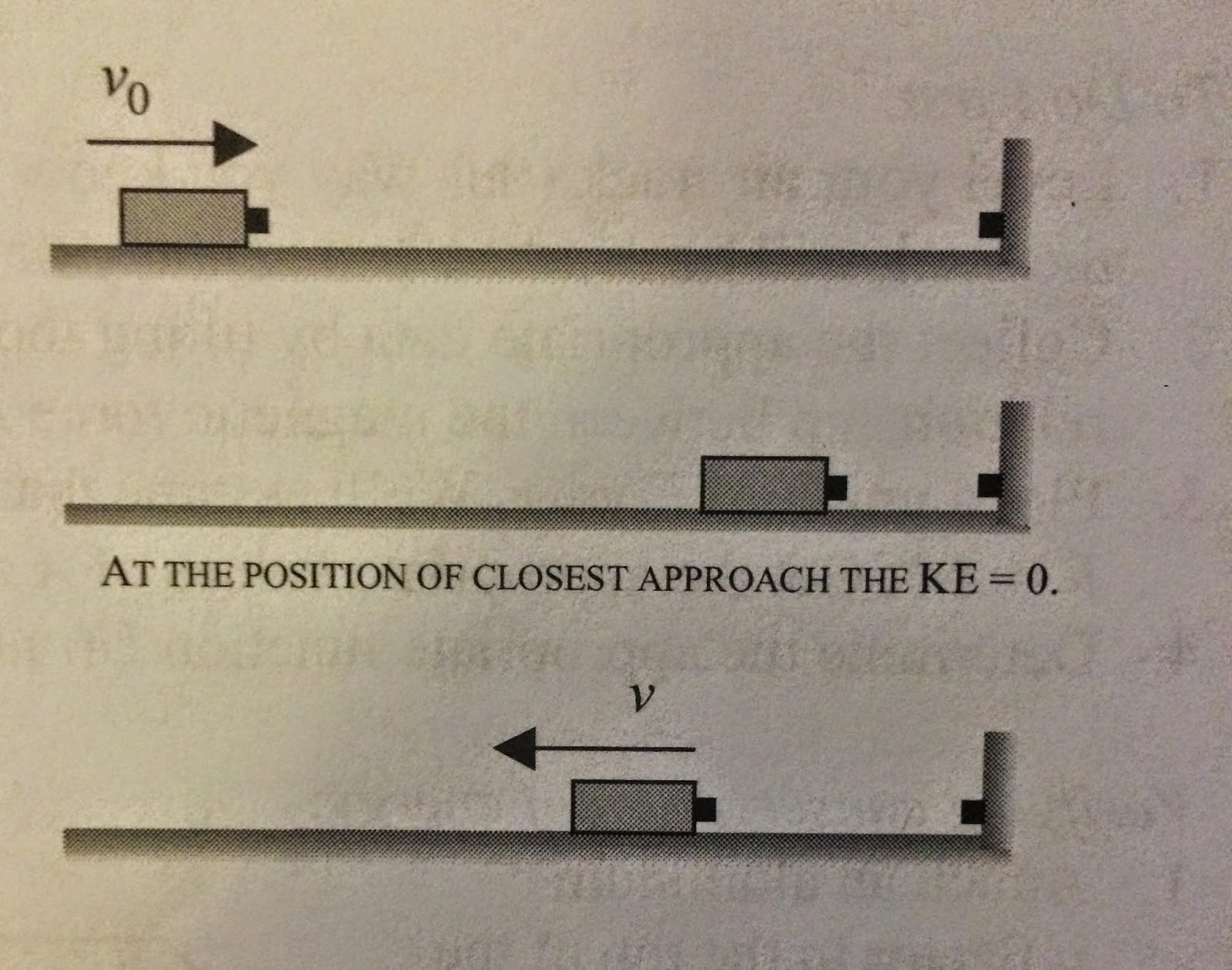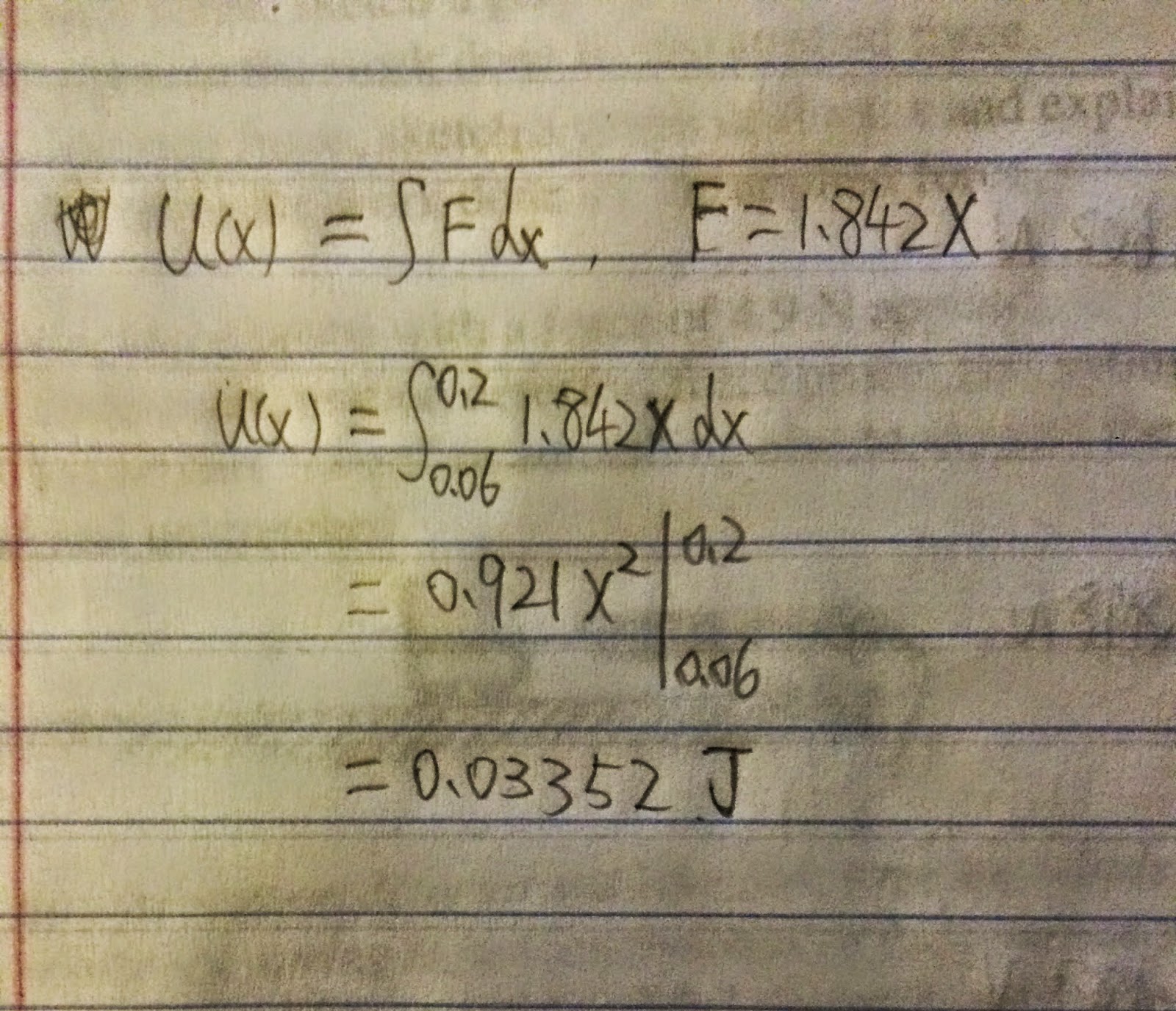For a constant force F acting over a time interval t, the impulse J = F*t.
However, if the force is not constant, we can still calculate the impulse as the area under the force vs. time graph.
The impulse-momentum theorem states that the amount of momentum change for the moving cart is equal to the amount of the net impulse acting on the cart.
our purpose of this lab is to test this idea.
EXPT 1: Observing Collision forces that change with time.
First, set up like the picture:
we could measure the impulse acting on the cart by taking the area under the force vs time graph for the collision, and measure the change in momentum of the cart by knowing its mass and measuring its velocity before and after the collision using the motion detector.
1. Fasten the force probe securely to the cart so that the rubber stopper extends beyond the front of the cart. set the positive direction is toward the right.
2. set up the motion detector. be sure that the ramp is level.
3. We measured the mass of the cart and sensor m = 0.635 kg.
4. Open the experiment file called Impulse and Momentum.cmbl, set up to record force and motion data at 50 data points per second.
5. zero the force probe and begin graph. then give the cart a push toward the wall.
after we did by following the steps, we got the graph:
red line is the graph of Force vs. time.
this blue line is the graph of position vs. time.
this blue line is the graph of velocity vs. time.
From this graph, after we integral the graph of force vs. time we got the area A = -0.3952.
after we liner fit the graph of position vs. time before the collision, we got the slope m = 0.3615 which states the cart's velocity before the collision v(0) = m = 0.3615 m/s
after we liner fit the graph of position vs. time after the collision, we got the slope m = -0.2790 which states the cart's velocity after the collision v(f) = m = -0.2790 m/s
Then, we did the calculation to test that the impulse is equal to momentum or not.
we could see the impulse J = mv(f) - mv(0) = -0.4067 is very close to the area under the graph of force vs. time which states the momentum.
EXPT 2 : A larger Momentum change.
this experiment is same as experiment 1 but add 200 grams of mass to our cart. m = 0.835 kg.
Repeat the experiment using a more massive cart. record the appropriate data and graphs.
red line is the graph of Force vs. time.
this blue line is the graph of position vs. time.
this blue line is the graph of velocity vs. time.
From this graph, after we integral the graph of force vs. time we got the area A = -0.6621.
after we liner fit the graph of position vs. time before the collision, we got the slope m = 0.4435 which states the cart's velocity before the collision v(0) = m = 0.4435 m/s
after we liner fit the graph of position vs. time after the collision, we got the slope m = -0.3622 which states the cart's velocity after the collision v(f) = m = -0.3622 m/s
Then, we did the calculation to test that the impulse is equal to momentum or not.
For this experiment, the impulse J = mv(f) - mv(0) = -0.6728 is still very close to the area under the graph of force vs. time which states the momentum.
EXPT 3 : Impulse-Momentum theorem in an inelastic collision.
It is also possible to examine the impulse-momentum theorem in a collision where the cart sticks to the wall and comes to rest after the collision.
leave the extra mass on cart so that its mass is the same as expt 2. m = 0.835 kg.
we predict that the impulse is same as the nearly elastic collision. and we predict that the impulse is equal to the momentum.
red line is the graph of Force vs. time.
this blue line is the graph of position vs. time.
this blue line is the graph of velocity vs. time.
From this graph, after we integral the graph of force vs. time we got the area A = -0.1763.
after we liner fit the graph of position vs. time before the collision, we got the slope m = 0.22 which states the cart's velocity before the collision v(0) = m = 0.22 m/s
after the cart hits the wall, it comes to rest. v(f) = 0.
Then, we did the calculation to test that the impulse is equal to momentum or not.
For this experiment, the impulse J = mv(f) - mv(0) = -0.1837 is still very close to the area under the graph of force vs. time which states the momentum.
Conclusion:
For those three experiments, all of the impulses we calculated and all of the areas under the graph of force vs. time are very close. If we could ignore some uncertainties (which like air friction,etc.), we could say that the impulse-momentum theorem can be used on those three conditions.













.JPG)




















.JPG)















